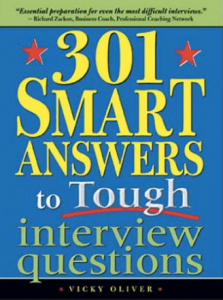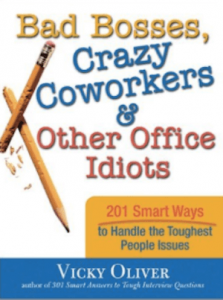The following is a guest post by Vicky Oliver, the best-selling author of five books, including 301 Smart Answers to Tough Interview Questions. In this guest post, she writes about thriving in an open workspace. If you’d like to be considered for a future guest post on Money Q&A, check out our guest posting guidelines.
We’ve become accustomed to looking to the tech industry for innovation when it comes to how we communicate. But one idea that tech mavens made popular, the open workspace office plan, is proving to be a flop — actually hindering the communication it is intended to promote.
Companies as diverse as energy bar maker Clif Bar, financial services company Square, and gaming company Kixeye have opted for the open layout. CEOs and upper-level managers tout it as a way to facilitate communication and interaction among co-workers, but let’s not overlook the boost to the bottom line in build-out savings.
What the company gains in construction savings, however, is squandered in lost productivity. The new configuration puts an end to offices with doors — and any semblance of privacy in general. Not only has productivity plummeted because of noise and disruptions, but any enhanced interaction appears minimal.
Some bosses also prefer open floor plans for minimizing social media browsing on company time, and for keeping employees from slipping out before the end of the workday. The configuration means staff must work in a fishbowl. Any staff members gunning for a co-worker’s job can monitor their every move.
Strategies for Surviving the Open Workspace Office Plan
Clearly, thriving in an open-office layout requires a strategy. Use these survival tactics to confront the situation:
Stake out your niche.
Are you the type who could study with the TV blaring? Write term papers in high-traffic coffee shops? Unless you’re accustomed to focusing regardless of the commotion around you, find a corner seat — preferably one that you can pick up and angle toward the wall. Determine where the loud talkers tend to gather, and move as far away as possible.
Transmit all internal and external affairs.
Just because team members can huddle up for planning and debriefing, don’t assume the communication chain disappears. Share information with peripheral teams, supervisors, or clients for whom it’s important to keep well briefed. Stick to the chain of command in terms of your written communiqués.
Recalibrate when the group gets bogged down.
Open workspaces promote groupthink and group buy-in. Teams often stall while trying to arrive at a definitive thumbs up. Try bringing in outside perspectives to rouse the group. Or, encourage the group to step back and solve the simpler problems, and then tackle more complex ones later.
Stay neutral. Don’t side with the mob.
Every workplace has its people issues, but open workspace plans can make dodging them more difficult. Underneath the veneer of camaraderie, it’s commonplace to find cutthroat competition among co-workers, resentment for those who don’t pull their weight, and annoyance toward personal cell phone abusers.
For your own survival, stay above the fray and treat everyone with respect. If someone really agitates you, try taking him or her out for coffee to discuss the problem off campus.
Honor courage and creativity.
If individuality is diminished in open workspace offices, it doesn’t mean praise for exceptional performance must be downplayed. Notice when a co-worker shoulders more than his share, comes up with a stellar idea, or takes a big risk that pays off. Be quick to give credit where credit is due, even if it flouts office culture. Recognition is always appreciated and never wasted.
Vicky Oliver is a leading career development expert and the multi-best-selling author of five books, including 301 Smart Answers to Tough Interview Questions (Sourcebooks 2005), named in the top 10 list of “Best Books for HR Interview Prep”, Bad Bosses, Crazy Coworkers & Other Office Idiots (Sourcebooks, 2008); and 301 Smart Answers to Tough Business Etiquette Questions (Skyhorse 2010). She is a sought-after speaker and seminar presenter and a popular media source, having made over 700 appearances in broadcast, print, and online outlets. For more information, visit vickyoliver.com.


